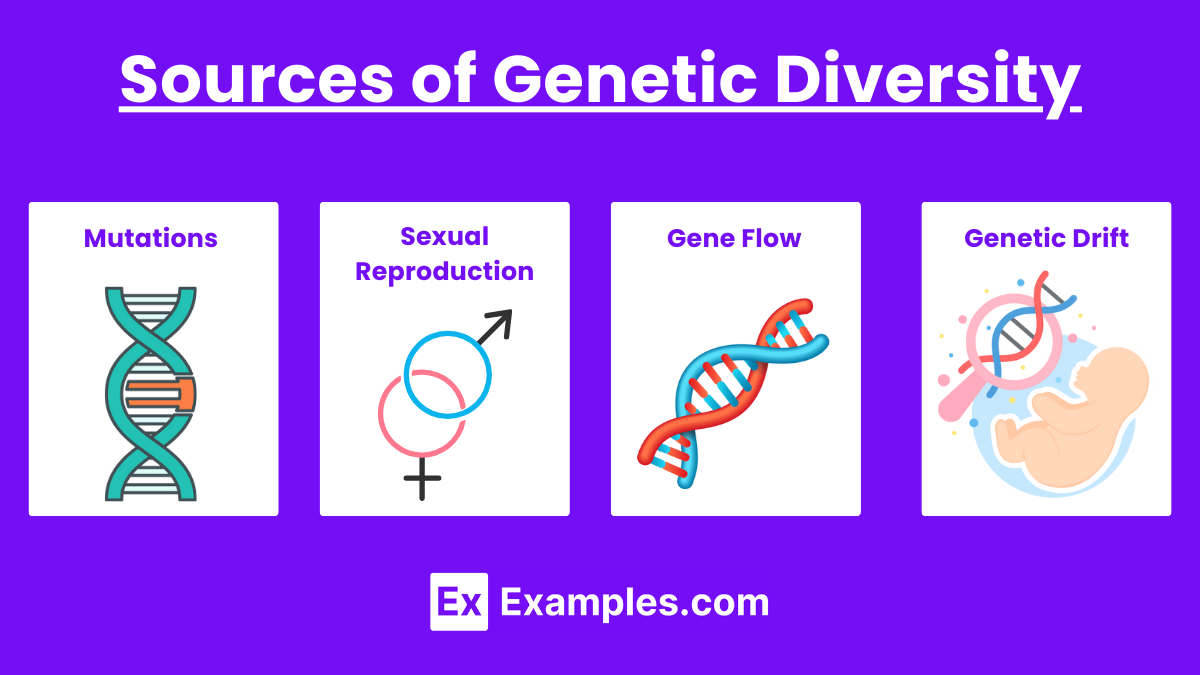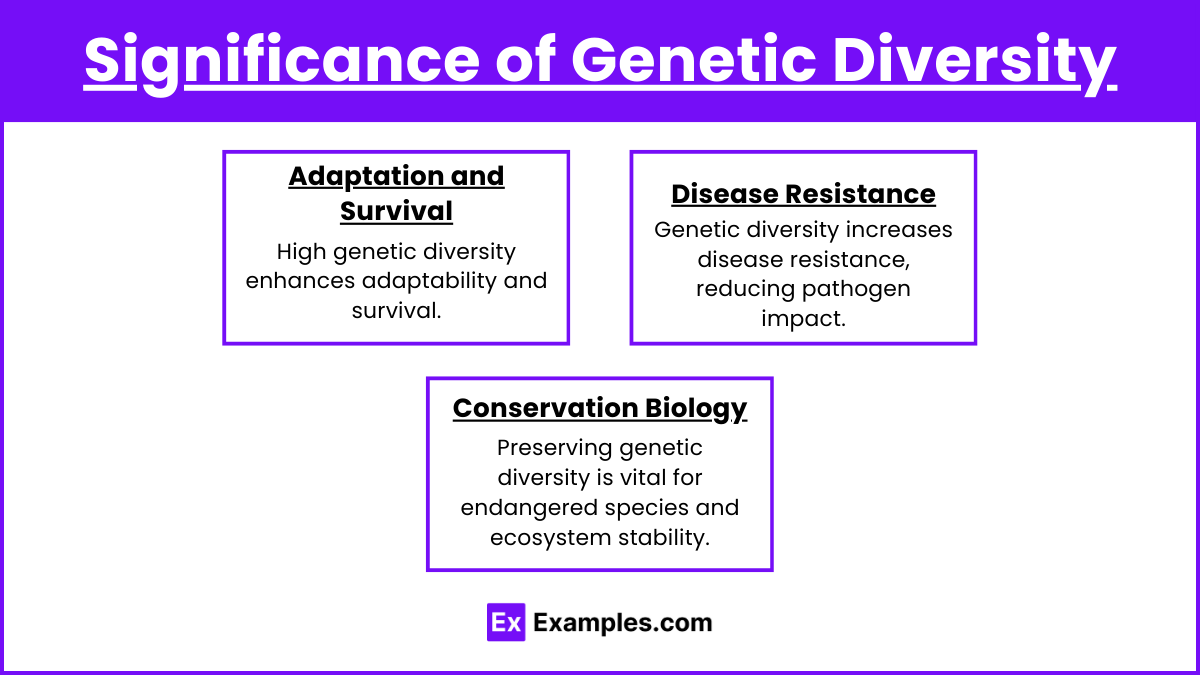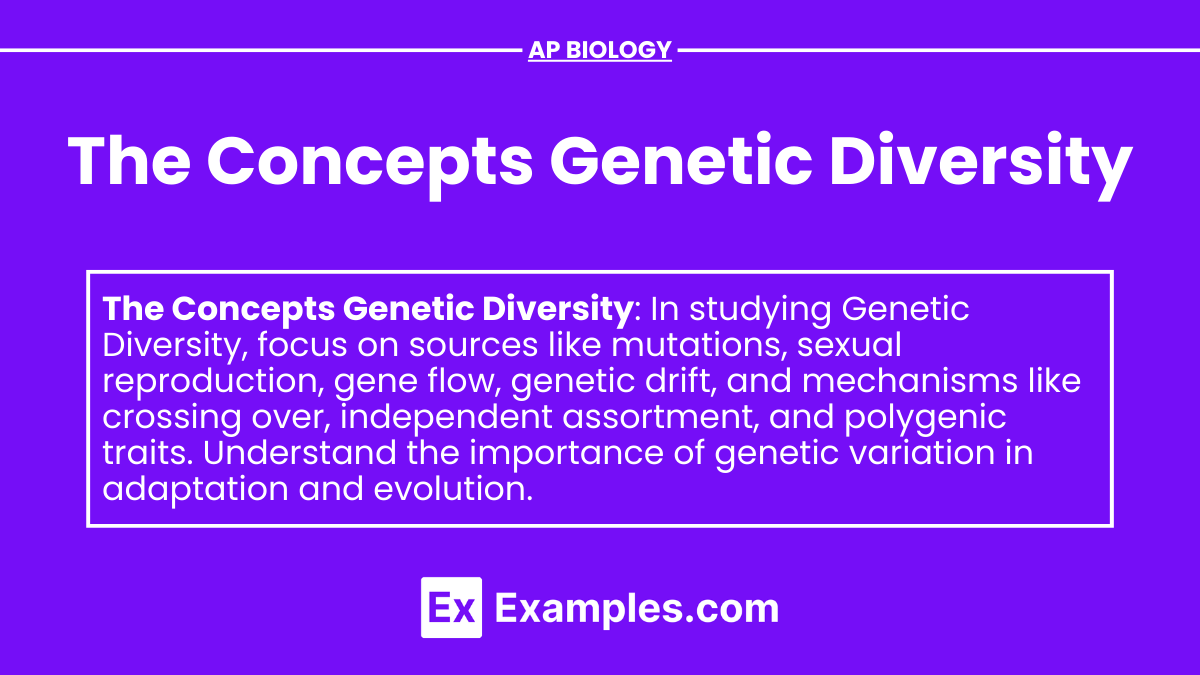Genetic diversity, a crucial topic in AP Biology, refers to the variety of genes within a species, enabling populations of flora and fauna to adapt to changing environments. This diversity arises from mutations, sexual reproduction, gene flow, and genetic drift, ensuring resilience and evolutionary potential. In ecosystems, high genetic diversity among plants and animals enhances survival and adaptability, making it vital for conservation and study.
Learning Objectives
By studying genetic diversity, students will understand how variations in DNA sequences among chromosomes arise from cell division processes. They will explore the importance of genetic diversity within the framework of cell theory and its role in the cell cycle. Students will learn to identify mechanisms such as mutations, crossing over, and independent assortment that contribute to genetic variation, essential for adaptation and evolution.
Overview of Genetic Diversity
Genetic diversity arises from various mechanisms that introduce variations in the genetic material of a population. These variations are critical for natural selection and evolutionary processes.
Sources of Genetic Diversity

Mutations
Definition: Mutations are changes in the DNA sequence that occur randomly or due to environmental factors.
Types: Point mutations, insertions, deletions, and chromosomal alterations.
Significance: Mutations introduce new alleles into a population, creating genetic variation.
Sexual Reproduction
Meiosis: During meiosis, genetic diversity is generated through:
Crossing Over: Exchange of genetic material between homologous chromosomes during prophase I.
Independent Assortment: Random distribution of maternal and paternal chromosomes into gametes during metaphase I.
Fertilization: Random fusion of male and female gametes further increases genetic diversity.
Gene Flow
Definition: Movement of alleles between populations through migration and interbreeding.
Impact: Introduces new genetic material into populations, increasing genetic diversity and reducing differences between populations.
Genetic Drift
Definition: Random changes in allele frequencies in small populations.
Bottleneck Effect: Drastic reduction in population size due to environmental events, leading to a loss of genetic diversity.
Founder Effect: When a small group of individuals colonizes a new area, carrying only a fraction of the genetic diversity of the original population.
Mechanisms Maintaining Genetic Diversity

Balanced Polymorphism
Definition: The maintenance of different phenotypes in a population.
Heterozygote Advantage: Heterozygous individuals have a higher fitness than homozygous individuals, preserving genetic variation.
Frequency-Dependent Selection
Definition: Fitness of a phenotype depends on its frequency relative to other phenotypes in a population.
Impact: Rare phenotypes are favored, maintaining genetic diversity.
Significance of Genetic Diversity

Adaptation and Survival: Populations with high genetic diversity are more likely to adapt to environmental changes and survive.
Disease Resistance: Genetic diversity in a population can lead to variations in disease resistance, reducing the impact of pathogens.
Conservation Biology: Preserving genetic diversity is crucial for the conservation of endangered species and ecosystem stability.


